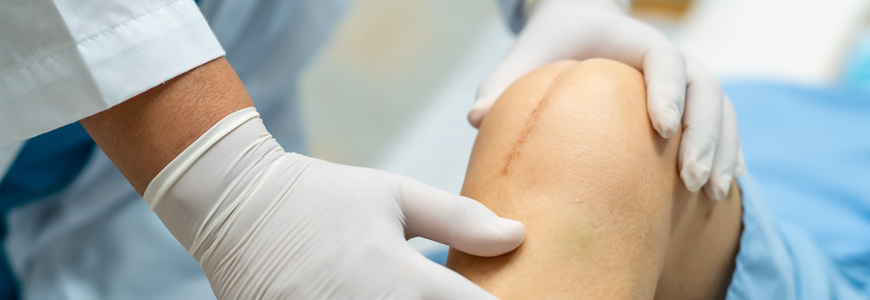A new robotic-assisted surgical option for patients needing a total knee replacement uses intraoperative 3D planning to accurately plant implants. The evolution of this novel robotic surgery system relies on real-time bone morphing steps to create a 3D model of the patients’ anatomy. This approach improves the accuracy of bone cuts and eliminates the need for preoperative advanced imaging such as CT imaging. Duke is one of only a few centers nationwide with access to this cutting-edge technology.
Thorsten M. Seyler, MD, PhD, an orthopaedic surgeon specializing in adult reconstruction, and his team at Duke were the first in the eastern U.S. to complete the surgery using the second-generation CORITM Surgical System (Smith+Nephew, London, United Kingdom), which employs intra-operative mapping to place knee implants.
“With knee replacements, if the knee is well aligned and the weight distribution is exactly equal, the implant should have improved survivorship compared to an implant that was placed by hand,” he says. “With modern implants, you’re looking at 15 to 20 years, but with implants using our robot, you’re looking at a lifespan closer to 20 to 30 years.”
While the evolving technology has been used at only a few centers so far, Seyler — who has more than 13 years of experience using robotic surgery and navigation technology — says this unique robotic-assisted approach at Duke improves outcomes for both the surgeons and patients.
New Option Increases Accuracy for Even Experienced Surgeons
One of the major differences surgeons experience, Seyler explains, is how much faster the communication between the handpiece and computer is with advanced tracking compared to older systems. Having trained on the first generation of this robotic system, Seyler says the newer version enables him to make cuts twice as fast, providing significant time savings. Performing a total knee replacement using this technology will take about one hour.
Additionally, the use of live modeling allows for real-time planning, which enables the surgeon to achieve a higher degree of accuracy. “Our system tells you within a degree if it's perfectly aligned or not,” he adds. “I cannot, by visual inspection, see if I'm off by a degree or two, but the robot will tell me.”
Seyler also notes that this surgical option has improved his efficiency in the OR. “When you think about a knee replacement, there are so many trays open on the back table, but I'm down to two trays,” Seyler said. “I’m very efficient and very fast because my past experiences have helped me adopt quickly to the new technology, and I have cut the learning curve to a third of a normal surgeon.” This also translates to a lower risk for infection, he adds.
Patient Recovery Shortens with Robotic-Assisted Knee Replacement Option
Initial feedback from patients about the procedure and their recovery has been positive, says Seyler, adding that the robotic-assisted approach causes less pain and minimizes blood loss compared with older methods because no instruments enter the intramedullary canal. Using these technologies, patients retain more natural bone and allows us to retain ligaments, including the ACL, which helps them maintain more of a natural rhythm and step, and they are able to regain function faster and return home sooner, he adds.
He also underscores the added benefit of not requiring a CT scan prior to the total knee replacement surgery. “It’s extremely important for patients to not being exposed to any unnecessary radiation,” says Seyler, noting that imaging isn’t often covered by insurance, which can leave the patient to pay a significant amount out of pocket.
The American Academy of Orthopedic Surgeons estimates total knee replacement surgeries are expected to increase 180% between now and 2030 in United States, indicating a need for increased options for patients at risk for osteoarthritis who may need surgical intervention.
Thorsten M. Seyler, MD, PhD, (or a member of their immediate family) has reported outside activities with Smith & Nephew, manufacturer of the CORI Surgical System.
